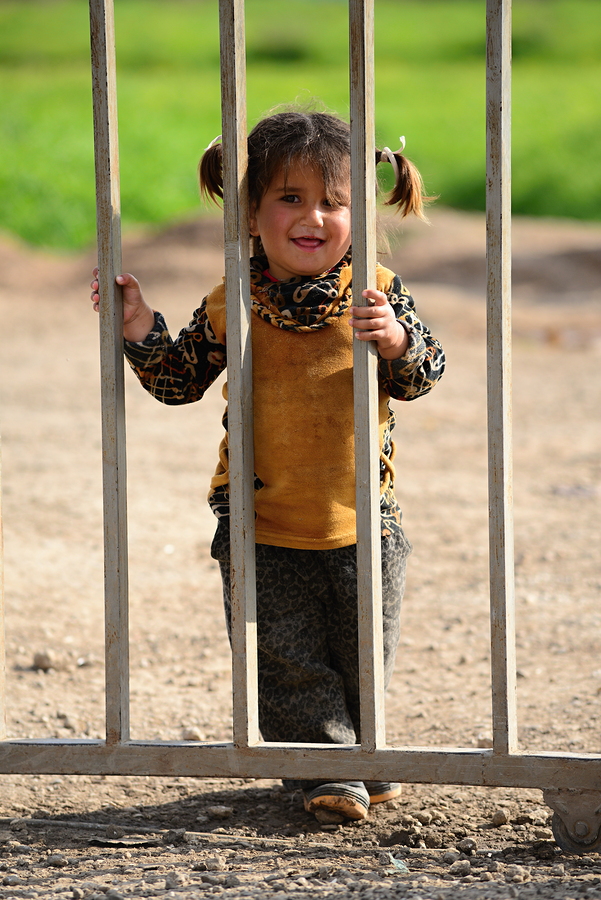How Economists Are Fueling the Worldwide Debate Over Refugees

published Feb 16th 2017, 11:01 pm, by Michelle Jamrisko
(Bloomberg) —
As nations the world over struggle to accommodate, or stem, the flow of a record number of migrants, economists are trying to make sense of the surge in data on how both refugees and the communities they land in are impacted.
More than 16 million new refugees sought homes around the globe in 2015, stoking a debate that cuts across security and economic lines. Under President Barack Obama, the ranks of refugees in the U.S. swelled, while President Donald Trump has worked to slash those figures.
The forces that helped propel Brexit in the U.K. and Trump to the White House primarily focus on fears of foreign danger. At the same time, some economists are joining the chorus of refugee and immigrant advocates who have long argued that these individuals have the potential to help lift their new economies.
Getting a sense of whether and how refugees and other immigrants make an immediate or long-term positive contribution to their new economies is a herculean task, for several reasons: Many academic studies are focused on a single economy; refugees’ skill sets and education often aren’t comparable to other migrants; and refugees’ tiny share of the population in most every U.S. community they enter makes it difficult to discern any impact.
With these caveats in mind, below are a few studies worth perusing to understand where the academic battle lines are being drawn on this issue. The analyses largely suggest that the foreign-born the U.S. can provide the right medicine for a struggling locale, bringing with them an especially strong enthusiasm to get jobs, buy houses, and integrate into an economy that presents more opportunity than their homelands.
However, the swelling collection of literature on refugees and immigrants in the economy also reveals the many special factors that can impact whether an immigrant sinks or thrives in a new economy.
Harvard University’s Borjas, whose views stand out in the academic world for being more pessimistic on the benefits of immigration, points out how a substantial influx of individuals can jolt an economy in a bad way.
So this study is a good place to start, particularly as it addresses the real challenges in this work and the fact that true effects from refugee shocks can take decades to discern. Borjas and Monras, of Sciences Po in Paris, explore four such shocks and their labor-market consequences: Cubans in Miami in 1980, refugees flowing into France after the 1962 Algerian War of Independence, Jewish emigres to Israel after the Soviet Union’s collapse in the early 1990s, and flows into several European countries from Yugoslavia in the 1990s.
The authors find that refugee supply shocks can have an adverse effect on low-skill workers already in the recipient country (as with the first two of their four case studies), but they also can provide a positive complementary effect — as when a bloated supply of fresh high-skill labor increases the wages of native low-skill workers (as with Israel).
Perhaps the greatest lesson from their study is an honest, if unsatisfying, one: “The humanitarian principles that encourage receiving countries to accept as many migrants as possible” also are subject to laws of supply and demand in the labor market, Borjas and Monras conclude.
Schaitkin, an economist at the New York-based research group, takes a broader look at immigration than refugees, starting from the premise that the U.S. is entering an era of near-zero growth in the working-age population as Baby Boomers continue to head to the sidelines and the fertility rate is too low to replenish the ranks.
For the U.S. at least, Schaitkin notes that the immigrant labor pool is higher-skilled and better educated in recent years than it was more than a decade ago — for all the furor the Trump administration over lost jobs to Mexico, there have been fewer Mexican-born immigrants and far more Asian-born immigrants. Still, occupations that have a higher share of foreign-born workers, including home health aides, will increasingly need those immigrants to help fill a greater demand in an aging population, he writes.
The short term might look rosier than the long term, according to this study prepared by 12 IMF staff members, including Aiyar, Helge Berger, Enrica Detragiache and Antonio Spilimbergo. Their research, while focused on the latest surge in asylum seekers in the EU, sees these migration flows producing a likely boost to economic growth as the host government spends more money to support the influx and as the labor supply increases.
The gap in employment and wages for migrants versus natives typically shrinks over time, but a number of policy areas can have the final say on the medium- and longer-run impacts: labor laws, taxes, and welfare among them, the authors note. One critical ingredient in harmonious integration: “the sooner the refugees gain employment, the more they will help the public finances by paying income tax and social security contributions,” and the quicker they will “counter some of the adverse fiscal effects of population aging.”
Foged, of the University of Copenhagen, and Peri, of the University of California at Davis, tracked data on the influx of low-skilled immigrants into Denmark from 1991 to 2008. While the study is isolated to a single country, the authors undertook a rigorous methodology, incorporating individuals from eight “refugee countries” into a range of locales and tracking the entire workforce of the country over time to allow for robust conclusions.
Foged and Peri establish three primary findings: The influx of immigrants prompted less-educated native workers to change occupations; the less-educated native workers experienced either positive or insignificant wage effects and employment effects; and these effects persist in the long run.
A few related items worth a click:
Foreign-born Americans make progress in catching up to native-born Americans in homeownership rates after five years in the country, an October report from real-estate website Trulia shows On immigrants and entrepreneurship, Sari Pekkala Kerr and William R. Kerr address their disproportionate role compared with native-born Americans, in this July 2016 study U.S. refugee policy emphasizes self-sufficiency, while Canada has stressed private sponsorship, as this Bloomberg story explains, and as the U.S. Refugee Act of 1980 stipulates Francine Blau and Lawrence Kahn, heavy-hitting labor economists, explore immigrants and wages in this November 2012 study, though this predates the substantial swelling of global migration Refugees generally have a tougher climb for economic integration than other immigrants, Kalena Cortes shows in this 2004 paper …and for those with a bit more time to dive in, more than 500 pages on the economic and fiscal impacts of immigration, edited by Blau and Christopher Mackie.
To contact the author of this story: Michelle Jamrisko in Washington at mjamrisko@bloomberg.net To contact the editor responsible for this story: Catarina Saraiva at asaraiva5@bloomberg.net Scott Lanman
COPYRIGHT
© 2017 Bloomberg L.P
NICODES







No Comment